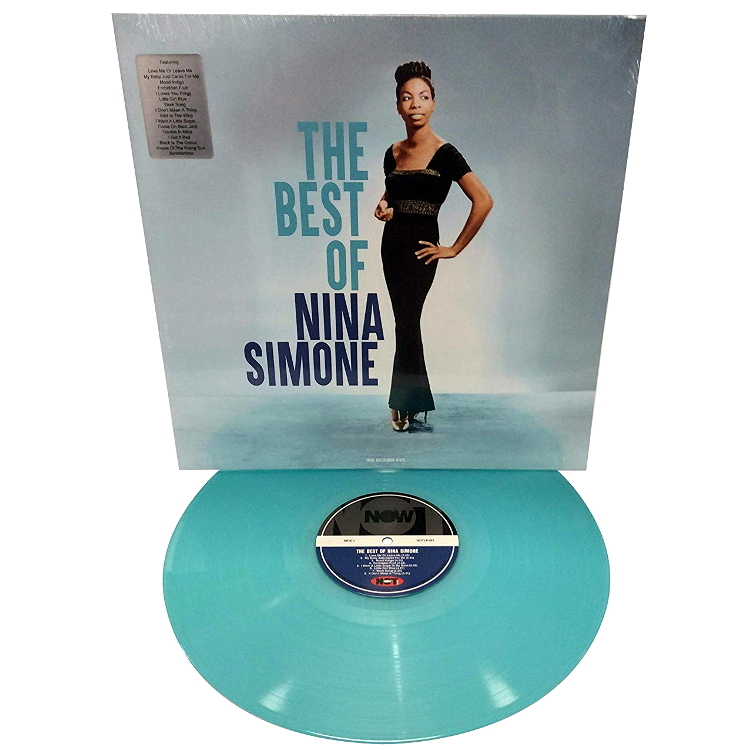
While I Put a Spell on You details the abusive she suffered from Andrew Stroud, What Happened, Miss Simone? offers a particularly brutal example. Simone once hid from her husband and manager for up to two weeks. “My attitude toward sex was that we should be having it all the time,” her voiceover says.ħ. A rare interview with Stroud also recalls how Simone unleashed “a sex attack” once, though the singer likely viewed that night differently. “No desire for sex,” she wrote, when she began suffering from depression due, in part, to her grueling tour schedule as an increasingly in-demand performer. To Simone, her sexual appetite was a way for her to gauge not only her marriage, but her mental health – and her diaries, as revealed in What Happened, Miss Simone?, became a log of sorts for precisely that. Whether it was at our house or Lisa’s house, Nina Simone’s home, it was definitely party with a purpose.” “It was just a great, great time,” says Ilysah Shabazz, one of Malcolm and Betty’s six daughters. The families became close, to the point where Simone’s daughter Kelly was constantly riding her bike back and forth between the two houses. Simone and her family lived next door to the controversial, iconic figure and his wife Betty Shabazz in Mount Vernon, N.Y. King and said, ‘I’m not nonviolent,'” guitarist Shackman says, laughing. “I remember one time she walked right up to Dr. She was never one to lie about her beliefs, not even to the leader who actively made it known that he stood for peaceful, passive protesting. Once Simone began focusing her energies on the Civil Rights movement, she would ask crowds at concerts whether they “were ready to kill if necessary” for the cause. Martin Luther King, Jr., “I’m not nonviolent.”
#The best nina simone cracked#
(“We all wanted to say it, and she said it,” comedian Dick Gregory says.) But just as these activists started embracing Simone, radio stations expressed their disapproval – not only by banning “Mississippi Goddam” from being played, as it has been said before, but sending back the records cracked in half.Ĥ. She wrote “Mississippi Goddam” in protest, which turned her into a rare female black voice speaking on behalf of the civil rights movement. The 1963 bombing of a black Birmingham church lent to the turning point in Simone’s career. Radio stations didn’t just ban “Mississippi Goddam” – they sent the records back. He is speaking to viewers, of course, but also the men playing poker and Playboy Bunnies who have gathered in his living room – an all-white audience.ģ. “I’d like you to meet someone who I think most of you know,” the Playboy founder says, before Simone performs her breakout version of “I Loves You Porgy” from Porgy and Bess.
#The best nina simone tv#
If anything, this archival footage from Hefner’s short-lived TV show, Playboy’s Penthouse, is a remarkable testament to Simone’s mainstream appeal from early on in her career, before her music became increasingly political. “Even when the kids used to play, they always just wanted me to play the piano for them to dance,” Simone’s voiceover says. Still, to hear both the singer and her daughter Lisa Simone Kelly testify to the sense of isolation she felt is absolutely heartbreaking. Simone has talked before about her rigorous classical music training – how she started playing piano at the age of four, then inspired her Tryon, N.C., neighbors to raise money for her to attend Julliard in New York City. This biographical detail does make sense, given what fans of hers have known about early life. How True Is 'Respect'? Fact-Checking the Aretha Franklin Biopic The Private Lives of Liza Minnelli (The Rainbow Ends Here) Here are 10 things we learned about Simone from the documentary. What makes this documentary remarkable, then, is its voiceover testimonials from the subject herself and interviews with family and friends, offering smaller but illuminating details of how depression, abuse and stardom wore Simone down before her Eighties-era resurgence.


That is also to say nothing of Simone as an artist, who wrote “To Be Young, Gifted and Black” and skillfully reinterpreted songs by George Gershwin, Screamin’ Jay Hawkins and Bob Dylan to reflect her own truth. Garbus isn’t the first to do so, by any means: Simone wrote an 1991 autobiography, I Put a Spell on You, while several biopics have long been in the works (the first, titled Nina and starring Zoe Saldana as the singer, is scheduled to be released later this year). this is my last jazz concert and I’m graduating to a higher plane.” Garbus’ latest documentary, a Netflix original titled What Happened, Miss Simone?, is her attempt to understand what the iconic singer and civil rights activist meant by that declaration. Filmmaker Liz Garbus was in the audience when Nina Simone performed at the 1976 Montreaux Jazz Festival in Switzerland, her first words to the audience being, “You don’t understand me, you don’t know what I mean when I say I’m tired.


 0 kommentar(er)
0 kommentar(er)
